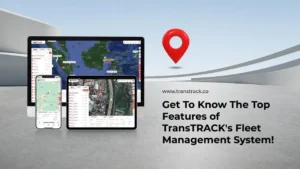How to See the Age of Car Tire that You Should Know!
Posted on January 19, 2024 by Nur Wachda Mihmidati

Age of tire in old car usually need to be replaced because they can cause traffic accidents. Then, how do you know the age of these car tires? What things must be considered to be able to know the age of our old car tires? You can read it through the following article TransTRACK!
How to Know the Age of Car Tire
Just like our legs ache after a long walk, car age of tire will also ache every time we drive. This is not a sign of bad driving – well, usually not – but rather an inevitable fact. Tires get old and wear out. And since a tire failure while we’re driving can be catastrophic, causing our car to spin out of control or leaving us stranded in the middle of nowhere with no easy way to get home, we want to know when our tires are in bad shape. So that we can get new tires before something goes wrong. Of course, if we have a mechanic who checks our car periodically, he will probably tell us if the tires need to be replaced, but there are some things we can do ourselves before visiting our local car center to make sure the tires are in good shape. Here’s how to tell how age of tire on your car.
Tread Depth
What is the remaining tread depth? The tread depth of our tires should not be less than 1/16 inch (1.6 millimeters). If we regularly drive on slippery and wet surfaces, we’d be better off with twice that. We can buy a gauge to measure tread depth like the professionals do, but there’s an old trick that will give us a rough idea of how much tread depth we have left and costs nothing.
Take one Rp 500 coin, and insert Abe’s head (head down) into the tread. If it looks halfway, then we don’t have enough tread. Take your car to a mechanic and ask about getting a new set of tires.
Tread Wear Indicator Bars
Evidence of flat rubber bars running perpendicular to the tread direction indicates that we need new tires. New tires have conveniences that old tires don’t have. They have tread wear indicator bars built into the tire itself. These bars, invisible or barely visible when the tire is new, gradually begin to appear as the tread begins to wear. They appear as flat rubber bars perpendicular to the direction of the tread itself. If more than one or two of them are visible on the tire, the tread is getting lower. This should be obvious on wet tracks that our tires leave after we drive through puddles. If bars start to appear on any or all of the kit’s tires, again check with your local mechanic or tire dealer to find out how to get the tires replaced at this time.
Cracks in the Sidewall
Cracked and weathered sidewalls are also a bad sign. Not all tire problems will be in the tread. They can also appear on the sidewall. Fortunately, it is easy to do a visual check for sidewall problems. Look for tracks or cuts in the sidewall – indentations that are quite obvious to the naked eye. This could be a sign that your tire has a puncture (or worse, is about to blow out). This is something we want to avoid. So if the cracks in the sidewalls start to look serious, take the car to the shop at the next opportunity and start talking about replacing them.
Bumps and Blisters on Tires
Bumps or blisters on our tires can cause blowouts. Sometimes the outer surface of the tire begins to weaken. The result can be bumps or blisters extending out from the rest of the surface. These weak points can lead to sudden blowouts. So keep an eye out for those tire bulges and blisters.
Too Much Vibration
Too much vibration is a sign that something is not right. A certain amount of vibration is unavoidable when driving, especially on poorly paved roads, but if we’ve been driving for some time, we probably know how much vibration feels right and how much vibration means something is wrong. There are several causes of vibration – maybe our tires are out of alignment or out of balance, or our shock absorbers are starting to work. But it could also indicate that there is some sort of internal problem with the tires themselves. Even if the tires are not the root cause of the vibration, the vibration can damage the tires and we will soon have problems. So, if your car is experiencing severe shaking, especially if you notice it when you’re not driving on bad roads, take it to a repair shop for a checkup.
Tire blowout
A tire blowout is one of the more dangerous forms of tire damage that can occur. It occurs when the structural integrity of your tire has been compromised and has completely lost its ability to hold air. Tire blowouts can happen at any time, but are more common in vehicles that have already suffered damage to their sidewalls such as cracks or tears. Through regular driving, these cracks and cuts can grow larger if left unattended and can result in a tire blowout. A tire blowout will directly affect the handling of our vehicle and its ability to steer.
To prevent tire blowouts, it is best to always perform a visual inspection on our tires. From there we can see if the sidewall has been compromised or if there are other forms of damage on it.
Check Tire Pressure
Use a tire pressure gauge to ensure your age of tire are properly inflated and then fill your tires with air as needed. To check the pressure, remove the valve stem cap, press the gauge head evenly against the valve stem, using firm pressure so that the hissing sound stops. Remove the gauge and read the pressure. Compare this to your vehicle’s recommended inflation pressure. Always check your tires when they are cold (after sitting for at least 3 hours or before you drive 1 mile at a moderate speed). Never relieve pressure from hot tires.
Check Tire Condition and Age
Check the condition and age of our tires. Depending on how much we drive each year, our tire tread can last for many years but just because the tread is not worn does not mean our tires do not need to be replaced. If following industry standards, companies will usually recommend that tires be removed from service no more than ten (10) years after the production date.
To determine the age of our tires, just look at the DOT stamp on the sidewall. At the end of the DOT stamp there will be a 4-digit number. This is the date code. The first two numbers are the week and the last two numbers are the year. For example, 4617 will tell us that the tire was manufactured in the 46th week of 2017.
Oil Evaluation
After fuel, oil is our vehicle’s most important fluid, which will also wear out and get dirty over its lifetime. Regularly scheduled oil changes will help keep our engines clean and avoid the potentially engine-damaging effects of contaminated oil. If we want to maximize engine performance, and most importantly, engine life, don’t skimp on our most vital engine lubricant. Skipping oil changes, exceeding mileage, or taking a long time before the next oil change can accelerate wear and tear on the vital parts that keep our cars running smoothly, ultimately leading to premature engine failure.
Do you have to change all of your car’s tire?
The answer to this question really depends on our car. Most cars on the road today are front-wheel drive, and some are rear-wheel drive. In which case, there is no need to replace all four tires at once. Usually replacing just two tires is enough. But all-wheel-drive systems are becoming more popular, and they require all four tires to be replaced at once. So for AWD vehicles, the short answer is yes, but let’s find out why.
In vehicles with all-wheel-drive systems, including Subarus, Audis and Lamborghinis, the differential and computer work together to send the right amount of torque to each wheel to minimize slippage and maximize control. If one of the tires is a different size than the others – because three tires are worn and one is new – the computer will misread and the differential will overwork. Drive this way long enough and you’ll burn out the drivetrain.
There are exceptions, even for AWD vehicles. If the tires only have a few thousand miles and need to be replaced, then it’s okay to replace a few. However, we also need to prepare a small spare to be able to get to the nearest repair shop if something unexpected happens suddenly, it may not be far enough to cause serious damage.
Remember to rotate our tires as it extends their lifespan in any vehicle; but for AWD vehicles, rotating the tires also ensures that the tread wears evenly and does not strain the drivetrain.
You should pay attention to the lifespan of your car tires if you feel that they are no longer capable of being used as normal tires. If you want good fleet management, then you can use the Fleet Management System in TransTRACK which is equipped with a variety of flagship features such as fuel sensors, monitoring driver behavior, managing vehicle usage, increasing fleet utility and safety, and other features. Let’s switch to a good and safe FMS and leave your fleet management behind!
Recent Post
Topic :
 Bahasa Indonesia
Bahasa Indonesia









